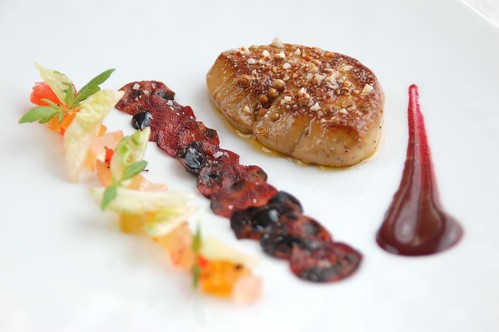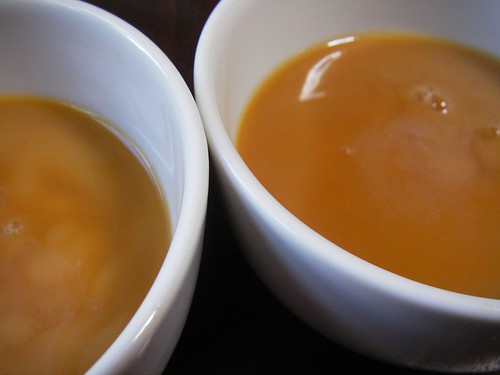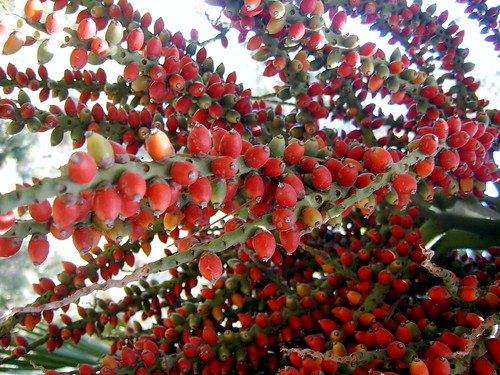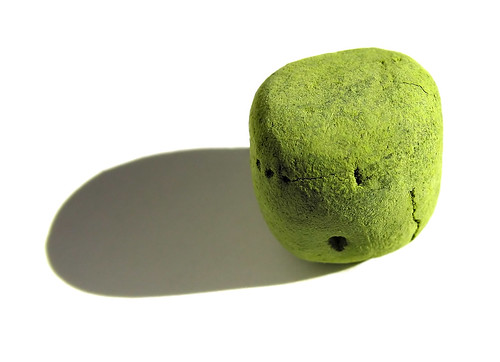7 Human Experiments of 2008 – Year in Review
The year 2008 is drawing to an end, which means it's time to take a look at the experiments of the past twelve months.
1. High-fat diet experiment
The first experiment I ended this year was the high-fat diet (read the conclusion here). The idea was to eat a diet high in fat and see what happens in terms of cholesterol and weight gain. On the menu were all the fats and oils your doctor warned you about: butter, cream, coconut oil and even lard. Saturated and oh so tasty.
As I increased my fat and protein intake, I got rid of a lot of carbohydrates. In the beginning of the experiment I removed potatoes, bread and pasta from my diet but still ate rice occasionally. As time passed, I stopped eating rice as well. Meat, fat, fruit and some vegetables were the staples of the diet, which made it a kind of a mix between Atkins and the Paleo diet. The one grain product I didn't give up (and still haven't) was beer, which I, as you may have noticed, consider a divine invention. I was on the diet for about a year and a half in total.
So what happened? Well, for one thing I proved my hypothesis that eating lots of fat does not make you fat. In fact, I lost a few kilos on this diet and got my body fat to less than 8%. My blood pressure levels rose from very low levels into the normal range, which I attribute to all the fat in the diet.
My cholesterol levels were in a pretty good shape, which means that eating cholesterol and saturated fat does not necessarily clog your arteries; once again, I propose it's the amount of carbs you consume with them that makes a difference. And the matter is not as simple as saying that high cholesterol levels are bad in general (or even that HDL is all good and LDL is all bad).
While I did eat some carbs (in the form of fruit and vegetables), my carbohydrate intake was considerably lower than that of most people. On the other hand, my fat intake (especially saturated and animal fat) was considerably higher than what is normally considered healthy.
2. Vitamin B experiment
In this experiment, I took up to 5 times the Recommended Dietary Allowances (or RDA) of the vitamin B complex just to see what happens. I increased the size of the doses as the experiment went on, but didn't notice anything – not even a niacin flush (read the conclusion here).
Looking back, this was a fairly boring experiment with no exciting results to report. I guess the take home message is that taking lots of vitamin B won't kill you. Not after a few weeks, at least.
3. Caloric restriction experiment
This experiment was one of the more difficult ones for me. My caloric restriction lasted only for a week, during which I reduced my calorie intake to 1,750 kcal per day. I quickly learned that the days of enjoying cheese and wine would have to be swept into the past if I were to succeed in the experiment. Some sleepless nights were spent thinking about food and how great it is to eat stuff.
The trick was to choose foods with a high satiety index and a low energy index, which means eating nutrient-dense foods with little calories. Raw foods (including meat) and salads seemed a good way to go about it, and after a while the hunger seemed to diminish. Still, the fact that I couldn't drizzle my much-loved olive oil over everything made me rather depressed.
What made the week even more difficult was the fact that I was out on most nights drinking beer, which is pretty high in calories but makes you even hungrier. The thing I hated most, however, was having to count the amount of calories in each meal. Yes, there are some good tools to do that, but weighing everything and entering it into the software was a huge hassle for me.
The benefits of CR seem pretty good (mice and rats have been shown to live longer, and the calorie-restriced monkeys look much younger and healthier than their counterparts), so if you're serious about life extension, you might want to give it a go. Some willpower is definitely required.
4. Weight gain experiment
Nicknamed "Fat camp" by yours truly, this experiment was meant to help me gain back the weight I lost on the caloric restriction diet. This, of course, not only meant eating more in general, but eating the very carbohydrates I had so passionately rejected before.
Surprisingly, gaining weight proved to be somewhat difficult for me. My appetite was not as great as it had been before going on CR, so there were times I almost had to force myself to eat. Trying a combination of protein, fat and beer (but no other carbohydrates) and not gaining weight also lead me to formulate my beer gut theory.
Eventually (after 43 days, to be precise), I managed to gain a few kilos and, in the dead of night, I escaped from the fat camp and left behind me the walls I had helped to build.
5. Biotin experiment
In this one, I took 5 mg of biotin daily to see whether it would have an effect on hair and nail growth. No studies have proven the claims circulating the internet about biotin making hair grow stronger, so naturally I had to test it on myself.
After a month the bottle was finished, and no results were visible. I concluded that it was ineffective, and that the positive effects I had read about were either due to some people being biotin deficient, in which case biotin supplementation really might help, or simply imagined.
6. MSM + chondroitin + glucosamine experiment
By this time, the idea of affecting hair and nail growth with supplements had intrigued me so much that I decided to start another experiment. This time I took a powder with MSM, chondroitin and glucosamine, which are claimed to improve joint health, increase the speed of hair and nail growth as well as make them thicker.
After I'd ran out of the disgusting sulfur cocktail (having seen no results), I bought a powder that had only MSM in it, since MSM is supposedly the key ingredient in terms of hair and nail growth. This increased my dosage from 1,000 mg to 4,000 mg. Even this large dose failed to show any results, which drove me to go overboard and take 8,000 mg of the stuff daily. The disappointing conclusion was that MSM did absolutely nothing except taste very bad.
7. Coenzyme Q10 experiment
In this experiment, I took 200 mg of coenzyme Q10 to see if it would have an effect on general health and exercise performance. There have been some suggestions in the scientific literature that it might increase lifespan, which made me even more interested, as did the fact that it has been used to treat gum disease.
The studies on coenzyme Q10 seem to be inconclusive, and as I reported in the conclusion, three months of supplementation had no effect on me; not health-wise, not exercise-wise. Since it's one of the more expensive supplements, I stopped taking it after I had finished the two bottles I purchased. It does seem like a promising supplement, however, and if I was older I would probably continue using it.
Currently ongoing experiments
The above is of course an incomplete of all the experiments started during this year, since I have several experiments going on as I write. They are listed in the up right corner of the page under the title Ongoing experiments, right below Latest posts.
I will write more about them as they progress and as they're finished. Meanwhile, you can cast your vote to help me decide what I should experiment with next. The options are ginkgo biloba, melatonin, quercetin and hyaluronic acid. If you'd like to read more about one of these, choose your favourite one and click "Vote". Or if your choice is not on the list, just drop a comment.
Until then, happy New Year!
Read More......























